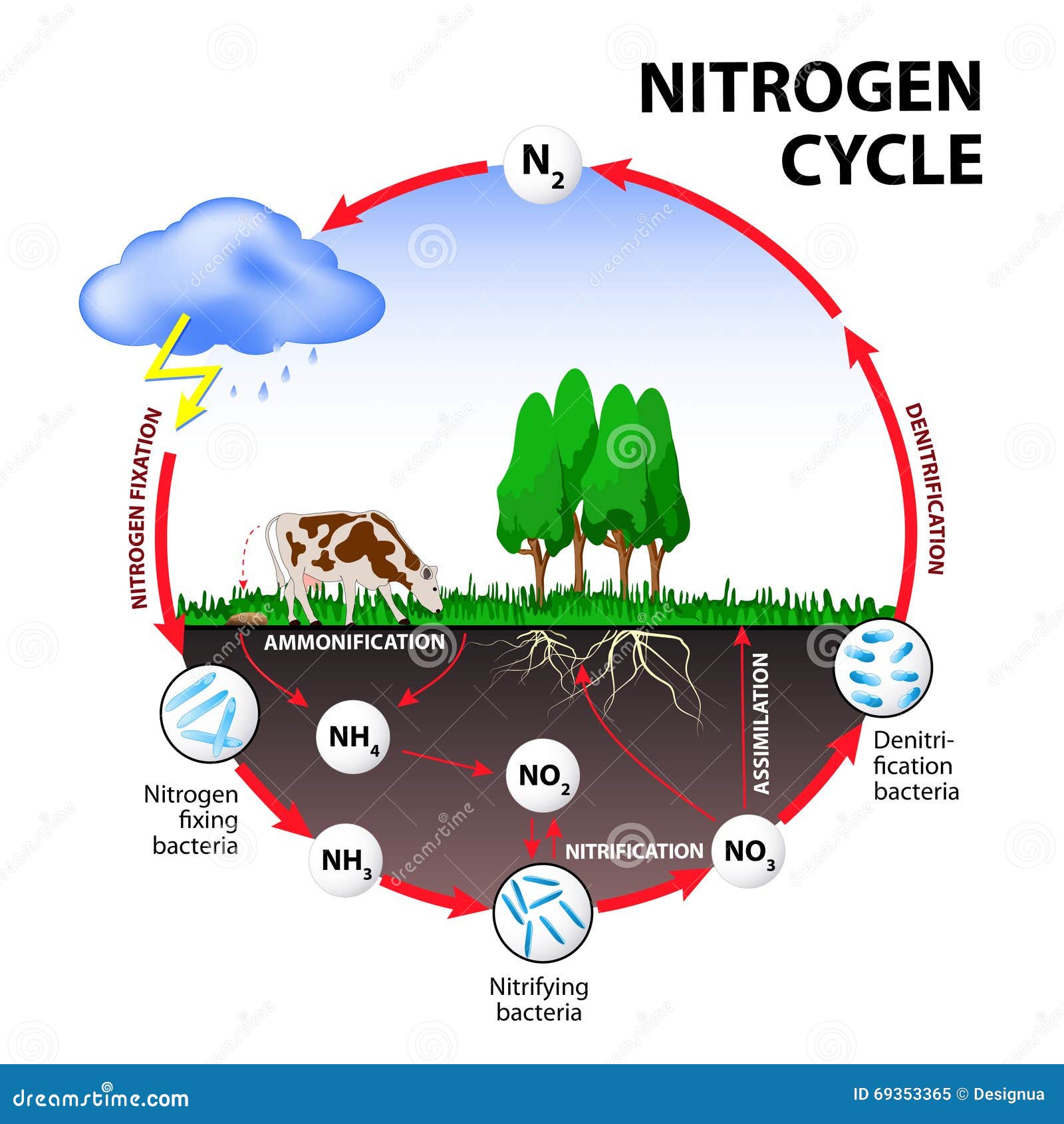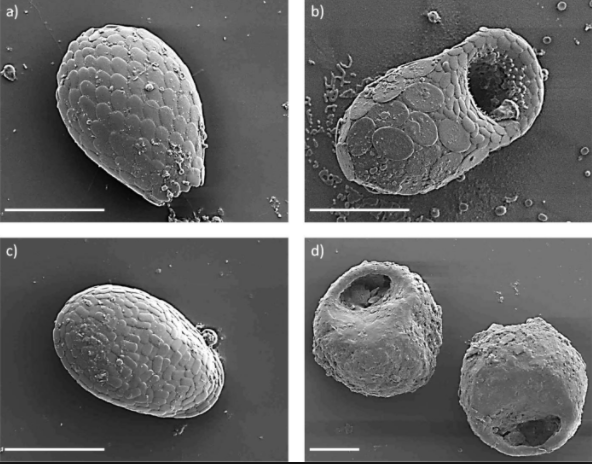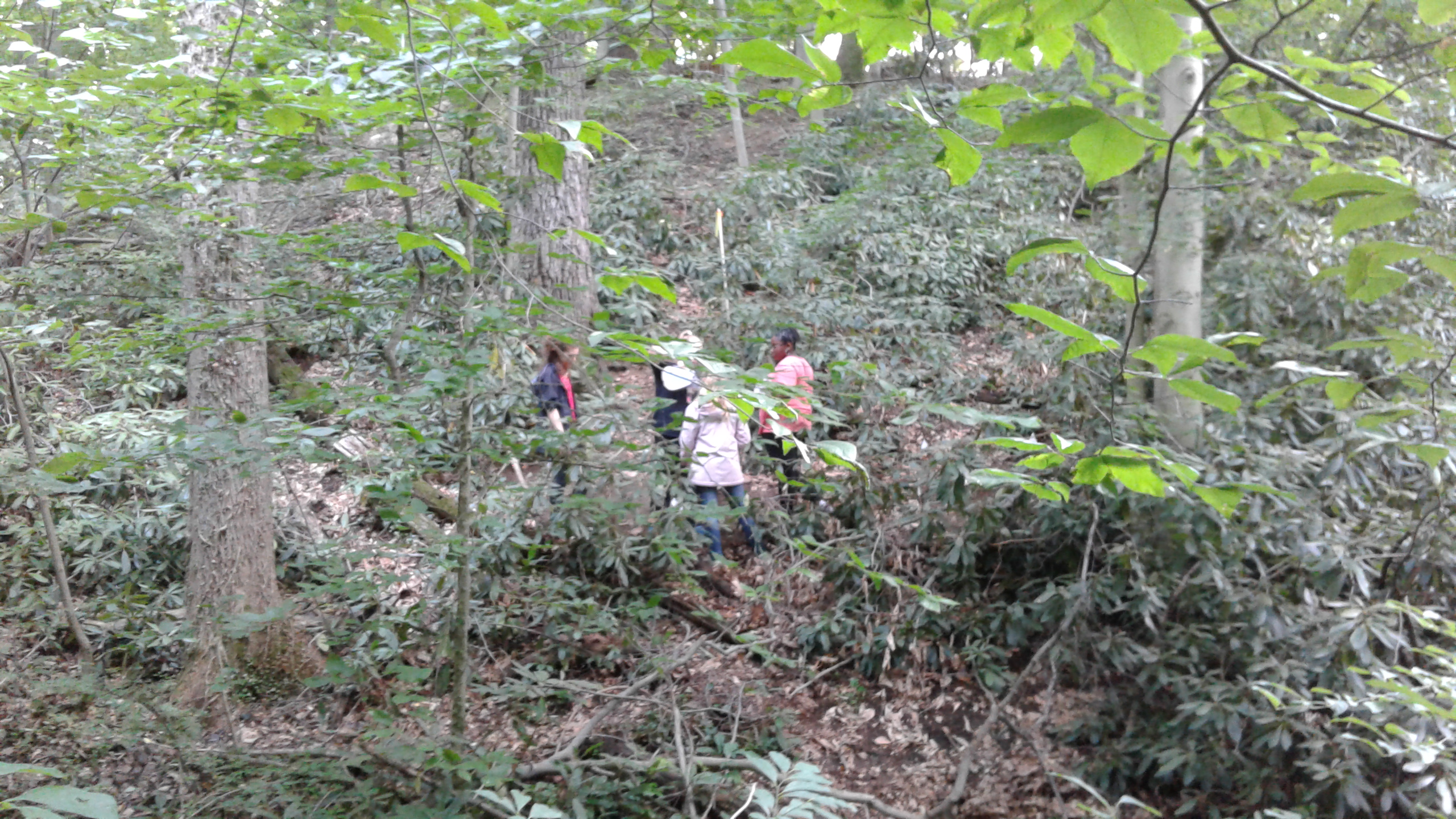What are protozoa?
Protozoa are organisms that are single-celled eukaryotes. They are found all throughout the environment, including the RPCS backwoods! Protozoa play an important role in the nitrogen cycle and without them, the plants and animals in the ecosystem would not get all their proper nutrients. Additionally, the protozoa help to regulate the bacteria density in the environment, since they eat the bacteria.
| What is the Nitrogen Cycle? The Nitrogen Cycle is a cycle in which the nitrogen in the atmosphere is converted to ammonia, so plants and animals can use it to be abe to survive. Bacteria and protozoa both play key roles in the cycle and their predator/prey relationship helps the cycle continue. |
 |
|
What are the different types of Protozoa? There are many types Protozoa that can be found by looking at soil! |
|
|
Mastigiphora: flagellates that are often smaller than other types of
protozoa, with a body that is pointed at one end where the flagellum is
attached. Usually tear-drop shaped. |
 |
| Sporoza: have visible organelles, and are relatively rare to find in soil. |
 |
| Ciliophora: large oblong protozoa with fuzzy sides. |
 |
| Shelled/Testate Amoeba: spherical protozoa with protruding spines and outer shell covering. Often highly visible. |
 |
| Unshelled/Non-Testate Amoeba: have no defined shape, can be light blue. Very nondiscript. |
 |
What are testate amoeba?
Testate amoeba are also known as shelled amoeba. Testate comes from their production of tests, or outer shell. This is how these amoeba can "go into hiding" when they are environmentally stressed. Testate Amoeba are the type of protozoa that will be most important for our research, because they contributed to the anamoly we observed.
| What are bacteria?
Bacteria can be found all over! They are prokaryotic microorganisms that inhabit almost every location and in great numbers. They are necessary in the environment, since they complete jobs from nitrogen fixation to decomposition. The bacteria is rod-shaped. The rod shape helps the bacteria to maneuver in the water. |
 |
How are bacteria and protozoa related?
Bacteria and protozoa share a predator/prey relationship. The protozoa eat the bacteria. The bacteria have more nitrogen than the protozoa need, resulting in the protozoa releasing the excess nitrogen into the environment. This excess nitrogen is used by the plants and animals in the ecosystem.
Why are we interested?
For many years, women in the E.S.S.R.E have been observing this protozoa bacteria relationship. This year, after surveying the backwoods of RPCS, we noticed an unusual relation between these microorganisms. The numbers showed a high number of testate amoeba and a low number of bacteria. Our team, the Rhododendronz, believe that this is a result of extremely dry conditions. Therefore, we hypothesized that adding more water to the soil would restore a more usual balance between the bacteria and protozoa populations.

Images from: https://www.dreamstime.com/royalty-free-stock-photos-nitrogen-cycle-image29063058 and http://theleadershipreview.org/features/i-sell-bacteria/
http://biodidac.bio.uottawa.ca/thumbnails/filedet.htm/File_name/brie013p/File_type/jpg
http://protistaproject.weebly.com/sporozoa.html
https://microbewiki.kenyon.edu/index.php/Ciliophora
https://bogology.org/how-we-do-it/biological-methods/testate-amoebae/